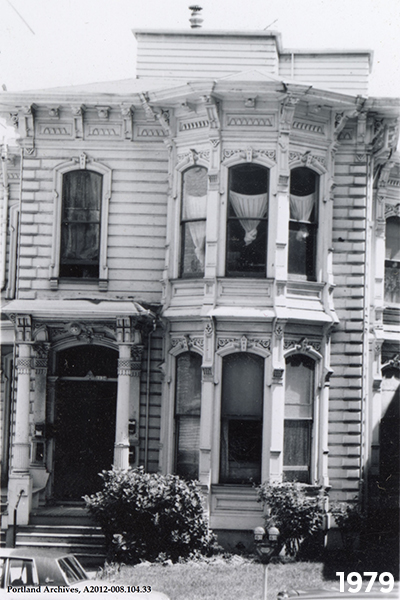Giving a History a New Home: the Fried-Durkheimer House
Emerio’s engineering team is honored to have played a part in the restoration of Portland’s historic Fried-Durkheimer House, also known also as the first Morris Marks residence.

Designed by Warren H. Williams, the Italianate-style house was built in 1880 for Morris Marks, a Polish shoe merchant, and his family. Moving out in 1882 for a larger house (which eventually becomes known as the official Morris Marks House), this smaller residence was then occupied by Moses and Fanny Fried, along with their four children. Daughter Delia and her husband, Julius Durkheimer, became the owners after the deaths of Moses and Fanny in 1896 and 1899, occupying the house until 1901.
According to census records, the house operated as a rooming house until 2003, then sat vacant until 2017 when it was purchased by preservationists Rick Michaelson and Karen Karlsson. Complex planning efforts were put in place to relocate and restore the house. In September 2017, the house was sawed into two pieces, mounted on wheels, and moved to its new home at 2117 SW Broadway. Now beautifully restored, the house has been transformed into a commercial office space and is listed on the National Register of Historic Places.

Image: Jim Brunke Real Estate
Emerio joined the team to provide site civil engineering at the house’s new location, including designing an on-site parking lot, stormwater planters, and ADA compliant sidewalks and curb ramps, as well as developing a traffic control plan to allow for minimal impact to drivers on SW Broadway.
This restoration project received a prestigious 2020 DeMuro Award for Excellence in Historic Preservation– the state’s highest honor for the preservation, reuse, and revitalization of architectural and cultural sites, and their impact on the community.
Design notes from Steve Hansen, PE, Emerio’s lead Engineer on the project:
 “While located on a small plot of land, this project presented its own little challenges, including the integration of stormwater planters as retaining walls, and maximizing the site for parking. It was great to watch the building being re-built as I constantly drive past the site on my way about town, knowing that I was a part of the team that helped this run down house be given new upgrades and a new life in the city.”
“While located on a small plot of land, this project presented its own little challenges, including the integration of stormwater planters as retaining walls, and maximizing the site for parking. It was great to watch the building being re-built as I constantly drive past the site on my way about town, knowing that I was a part of the team that helped this run down house be given new upgrades and a new life in the city.”
